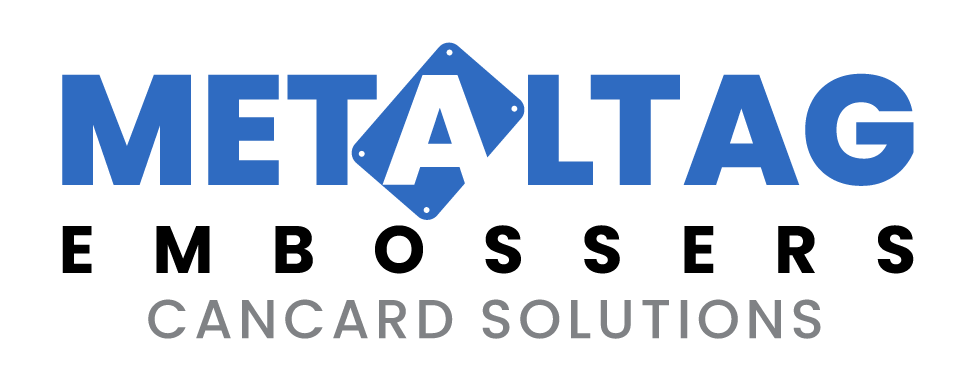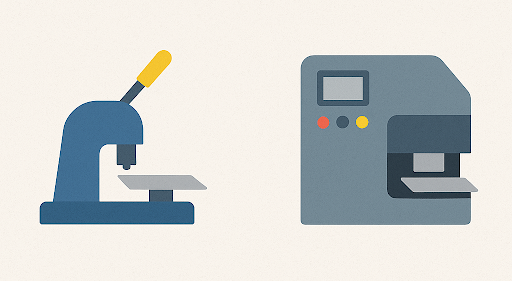In today’s industrial and healthcare environments, durable identification is critical. From hospitals and laboratories to oil & gas plants and factories, organizations need long-lasting tags that can withstand heat, chemicals, and abrasion.
That’s why many industries rely on a metal tag embosser — a machine designed to permanently mark stainless steel, aluminum, or brass tags with clear, raised characters.
But here’s the big question:
Should you buy a manual metal tag embosser or invest in an automatic metal tag embossing machine?
This guide will walk you through the differences, benefits, and ideal use cases to help you make the right decision.
What Is a Metal Tag Embosser?
A metal tag embosser machine creates raised letters, numbers, or symbols on metal tags. These tags are commonly used for:
- Healthcare & Hospitals → Patient IDs, equipment tracking, medication labeling
- Manufacturing → Machinery tags, compliance labels, production control
- Utilities & Oil/Gas → Pipe marking, safety tags, valve identifiers
- Defense & Military → Dog tags, equipment identification
The two most popular types are:
- Manual Metal Tag Embossers → Hand-operated, cost-effective, good for small jobs
- Automatic Metal Tag Embossers → Computer-driven, fast, accurate, and designed for large-scale operations
Manual Metal Tag Embosser
Best for: Small businesses, workshops, or occasional tagging needs.
Advantages:
- Low upfront cost
- Simple to use
- Portable and doesn’t need much space
Disadvantages:
- Very slow (only a few tags per hour)
- Relies on operator accuracy → higher chance of error
- Not suitable for high-volume or industrial use
Automatic Metal Tag Embosser
Best for: Hospitals, large manufacturers, utilities, and industries that need hundreds or thousands of tags every week.
Advantages:
- High output speed (hundreds of tags per hour)
- Consistent and error-free embossing
- Can integrate with software, CSV files, or ERP systems
- Long-term labor and cost savings
Disadvantages:
- Higher initial investment
- Requires training and space
- Maintenance is more technical
Manual vs Automatic: Side-by-Side Comparison
Feature | Manual Metal Tag Embosser | Automatic Metal Tag Embosser |
Output Speed | Low (few tags/hr) | High (hundreds/hr) |
Accuracy | Depends on operator | Consistent & precise |
Cost | Low upfront | Higher upfront, better ROI long-term |
Best For | Small shops, occasional use | Hospitals, factories, utilities, large industries |
Integration | None | Full digital/database integration |
If you emboss more than 50–100 tags per week, an automatic machine is usually the smarter investment.
You may also read:- What is an Embossing Machine? Types, Benefits, and Industrial Applications
How to Choose the Right Metal Tag Embossing Machine
When deciding between a manual or automatic metal tag embosser, consider:
- Volume of tags per week – Low or high demand?
- Material compatibility – Stainless steel, aluminum, brass?
- Tag sizes – Do you need multiple sizes?
- Budget & ROI – Will high upfront costs save long-term labor?
- Integration needs – Do you want the system linked to your database?
Final Thoughts
Both manual and automatic metal tag embossing machines have their place. A manual embosser is fine for small-scale work, but if you’re a hospital, utility provider, or manufacturer dealing with large volumes, an automatic model delivers the speed, consistency, and integration you need.
Looking for reliable solutions? Explore our range of Metal Tag Embossers at Cancard, request a free catalog, or connect with our specialists to find the perfect machine for your business.

